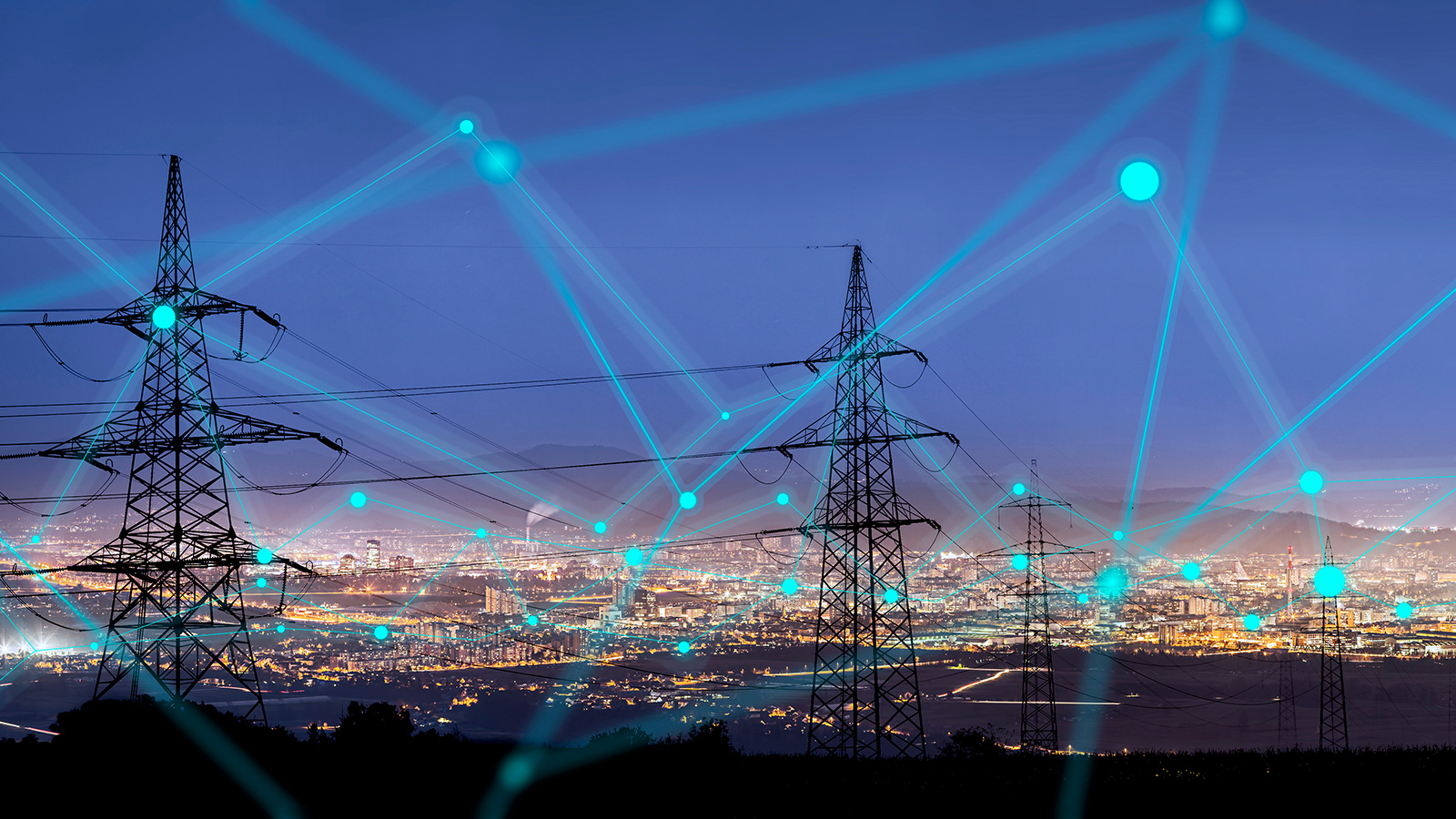Argonne National Laboratory
Partnerships to Combat Climate Change
Argonne expertise and tools help a wide range of organizations and industries to decarbonize and manage their climate risk.
From private industry, to academia, to state and local governments, a wide range of organizations and agencies tap into Argonne’s rare expertise and resources to meet local, national and global challenges. To explore how you can leverage Argonne’s capabilities, contact us.
Energy Systems and Infrastructure
- Argonne works with utilities and other infrastructure owners and operators to provide future climate data they can use in their own meteorological and environmental modeling activities. These data inform how they operate and maintain their infrastructure.
- Examples of work with regional electric grids:
- Argonne worked with the New York Independent System Operator (NYISO) to study the impacts to NYISO’s generation and transmission from extreme events – including an extreme winter ice storm and extreme heat.
- Argonne modeled the impacts of an extreme derecho weather event on the northeastern US electric grid for ISO New England.
- Argonne’s study of the Midwestern electric grid for PJM Interconnection projected the impacts of extreme ice and winter storms to regional transmission infrastructure.
- Argonne evaluated the impact of an extreme drought event on thermal power generation in Texas and projected the effects of future extreme droughts on power generation in support of long-term transmission planning for the western U.S.
- For Pacific Gas and Electric Company (PG&E), Argonne’s supercomputing resources helped obtain some of the most accurate global climate models available at 100-km grid cells and made them work over a much smaller scale, allowing for regional modeling of current and future climate conditions.
- Argonne partners with utilities on islands and remote areas to help them decide how to move from fossil-based to renewable – or more sustainable – energy. Work includes measuring the vulnerability of electrical grids, modeling the economics of different strategies and analyzing how changes may affect supply chains and communities.
Energy Storage
-
Argonne scientists and researchers are working to fill critical gaps in the energy storage landscape to achieve net-zero carbon emissions in the national and global economies. These gaps include:
- Battery materials supply chains that are inexpensive, earth-abundant and domestically available.
- Batteries that supply 2-3 times the energy density of today’s batteries for powering heavy duty transportation – long-haul trucking, rail, marine and aviation – that produce about half the carbon emissions of the transportation sector.
- Many-day discharge batteries to stabilize the electricity grid against up to ten consecutive days of cloudy or calm weather.
- Solid state electrolytes with high ionic conductivity to pair with metal anodes and conversion cathodes to enable safer, lower cost batteries.
- A predictive understanding of electrochemical materials and phenomena at atomic and molecular levels to enable “bottom up” design and build of next-generation batteries with targeted performance metrics.
- The Argonne Collaborative Center for Energy Storage Science (ACCESS) aims to transfer battery innovations to the marketplace by providing processes, materials, performance testing data, and finished cells to industries including transportation, consumer electronics, and materials manufacture and supply.
Water and Coastal
- Argonne helps local governments, water utilities, and other infrastructure owners and operators:
- Assess threats to, vulnerabilities of, and consequences of the disruption of water and wastewater sectors caused by reductions in the water supply from drought.
- Improve current and develop future drought mitigation programs.
- Evaluate the development of decision support tools and data sources that can assist in developing infrastructure that is more resilient to drought.
Telecommunications
- Argonne and AT&T have partnered on a climate resiliency project that helps AT&T better anticipate the potential impacts of extreme weather on its network infrastructure and business operations 30 years into the future. AT&T piloted the project in the Southeastern United States, which had been particularly hard hit by hurricanes, flooding, and high winds; Argonne and AT&T recently expanded this collaboration to encompass the entire United States.
Transportation
- Regional entities and government agencies leverage Argonne models of the impacts of future hurricanes and sea-level rise to coastal infrastructure that is critical to transportation and energy supply chains.
- Argonne has developed hydrological models to help state Departments of Transportation better account for changes in future rainfall and stormwater runoff, which affect river and steam flows, and thus the design of bridges and culverts.
- Argonne scientists have been evaluating the life-cycle of greenhouse gas emissions from sustainable aviation fuels since 2012. Partners have included with the Federal Aviation Administration, commercial aviation and trade organizations, and airlines such as United Airlines.
Agriculture and Land Management
- Local governments, agencies, and infrastructure owners and operators have partnered with Argonne to identify dependencies, interdependencies, and cascading effects of drought on major agricultural commodities.
- Argonne builds data pipelines and a data warehouse that pull data from various types of sources — measuring various wildfire indices, transmission line temperature and sag, etc. — to support situational awareness and wildfire risk analysis. Argonne synthesizes these key datasets used in wildfire modeling and mitigation into a single visualization tool that is updated in real time. This allows decision makers to easily see the real-time changes in data that affect the ignition and propagation of wildfires.
- Argonne is partnering with Iowa State University, Texas A&M University and Chevron-Phillips to develop a continuous flow process to convert plastic waste to high-valuable products, such as lubricants, fatty acids and alcohols.
- Argonne scientists are developing a prototype low-cost system for capturing carbon dioxide waste from manufacturing emissions and cleanly converting it into ethanol. Partners include Northern Illinois University, Northern Texas University and Angstrom Advanced.
- Argonne scientists are helping farmers explore the possibilities of growing biomass (e.g., crop or forest residue, waste, algae) to produce bioenergy. Partners include the American Farmland Trust and the University of Illinois Urbana-Champaign Extension Service. Argonne works with the biofuel industry to incentivize sustainable farming practices to reduce biofuel carbon footprints.
Urban Systems
- Argonne has assisted regional entities and government agencies by modeling impacts of future hurricanes and sea-level rise to urban systems (e.g., stormwater systems) within coastal towns.
Government
- The U.S. Department of Defense’s Strategic Environmental Research and Development Program (DOD-SERDP) sponsored the development of the climate model Argonne leverages. The project produced dynamically downscaled (12-kilometer plots of land) climate data sets for most of North America, thus providing users with neighborhood-level, actionable information about future climate.
- The U.S. Department of Homeland Security oversees the Regional Resiliency Assessment Program (RRAP), which is a cooperative, non-regulatory assessment program implemented to examine the resilience of critical infrastructure and systems through regional analysis. Argonne has contributed its expertise to many RRAP projects.
Industrial Decarbonization
- Argonne is partnering with Iowa State University, Texas A&M University and Chevron-Phillips to develop a continuous flow process to convert plastic waste to high-valuable products, such as lubricants, fatty acids and alcohols.
- Argonne scientists are developing a prototype low-cost system for capturing carbon dioxide waste from manufacturing emissions and cleanly converting it into ethanol. Partners include Northern Illinois University, Northern Texas University and Angstrom Advanced.
Advanced Nuclear Design
- Argonne is a partner in several of the U.S. Department of Energy’s (DOE) Advanced Reactor Demonstration Program awards. In one of these projects, TerraPower leads the construction and demonstration of the Natrium reactor and energy system on a retired coal power plant site in Wyoming.






